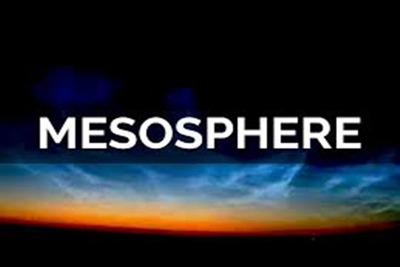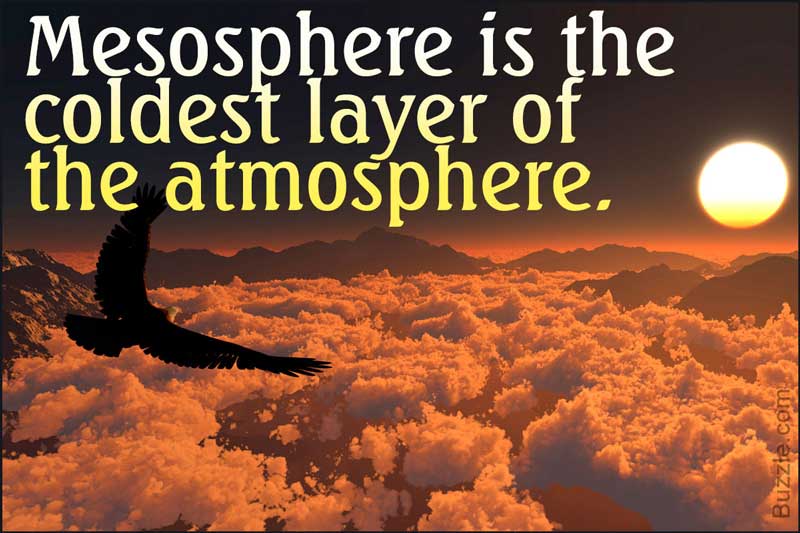
The Mesosphere, the third highest layer of Earth's atmosphere, occupies the region above the Stratosphere and below the Thermosphere. It starts at an altitude of about 50 km and extends upward to a height of about 85 km (53 miles) above our planet. The top most part of the Mesosphere, known as the ‘Mesopause’, is the coldest part of the Earth’s atmosphere with temperature averaging around - 85ºC to - 90ºC. Unlike the Stratosphere, here the temperatures once again grow colder with the increase of altitude. The air in the Mesosphere is too thin to breathe. The air pressure at the bottom of the layer is also very low, which is below 1% of the pressure at sea level, and it further continues to drop with the increase of altitude.
The Mesosphere is the layer where most Meteors burn up upon the atmospheric entrance. Just below the Mesopause, the air is so cold that even a slightest water vapor can be transformed to ‘Noctilucent clouds’, which are the highest clouds in the atmosphere and may be visible to the naked eye, when the Sun is around 4 to 16 degrees below the horizon. This layer is hard to study, as it is too high for the jet aircrafts and balloons to fly and too low for the orbital spacecrafts.
